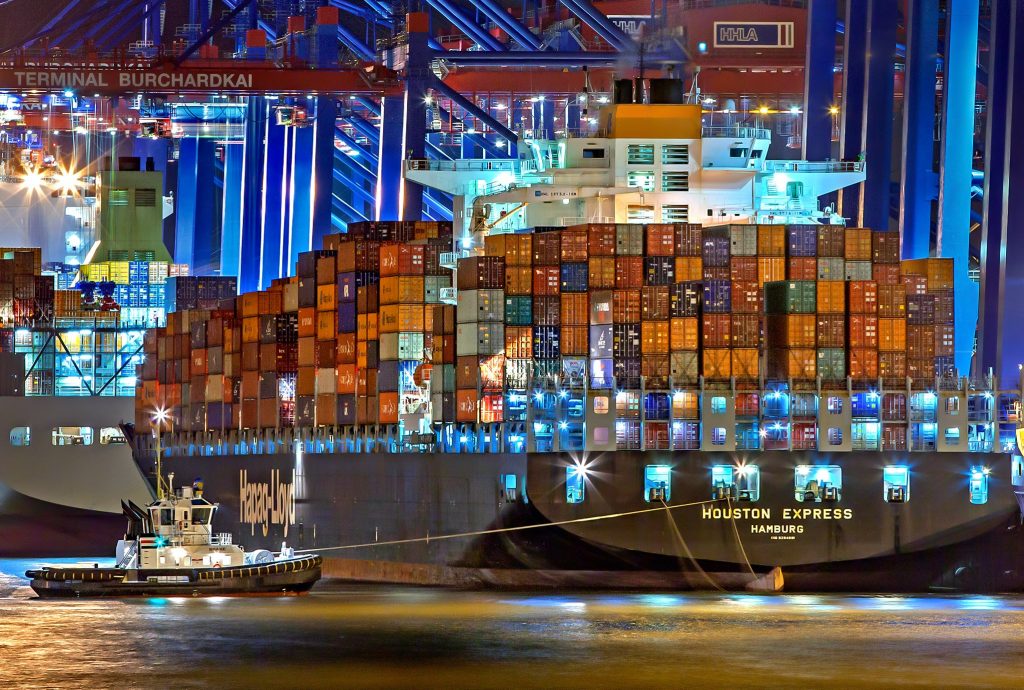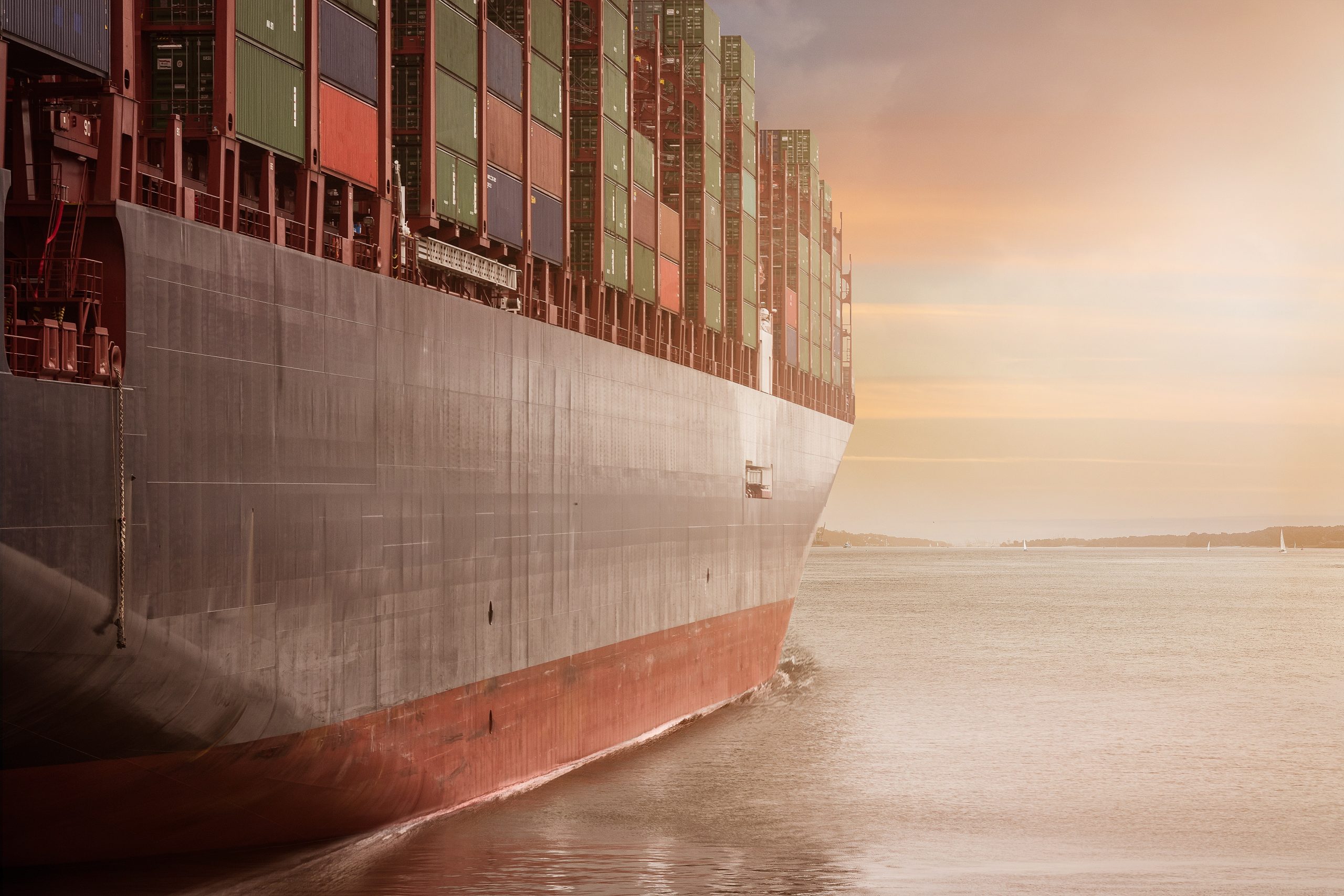There are five different forms of cargo that are transported by sea and transit through ports:
Liquid Bulk (cca. 29% of the 2018 loaded tons for international maritime trade)
Dry Bulk (cca. 46%)
Containers (cca. 18%)
Roll On Roll Off and Break Bulk. (put together – cca. 7%)
Liquid cargo is either carried as a free-flowing liquid (crude oil, vegetable oil, chemicals, wine, etc.) or as a liquid gas (natural gas, liquid petroleum gas). Specified port equipment, such as articulated lines pipelines that are connected to storage tanks, is used to pour or suction liquid bulk vessel cargo into or out of the hold. These reservoirs can be either on the quay or further away, with a pipeline connecting them.
Bulk freight – one of the five primary types of cargo – is put into a crane bucket by a forklift in one of our logistics training courses. Dry bulk cargo refers to cargo that is homogeneous, unpacked, and transported loose in vast quantities, such as grain, sand, gravel, iron ore, and cobblestones.
Vessels or shore-cranes with buckets are commonly used to load this cargo. Conveyors are frequently used to aid in offloading operations. Conveyor belts and storage locations, such as silos for the agri-bulk dry bulk cargo, may be present in more specialised terminals.

Some stacked containers used in our logistics training classes, each representing one of the five primary types of cargo. Cargo is compacted and carried in shipping containers of specified sizes (Intermodal containers).
Standard sizes – typically 20′ and 40′ long – are available for a variety of containers:
• Make sure it’s dry (toys, fridges, TVs, clothes),
• Tank (oils, gasoline, beer…),
• Open top or flat rack, • Reefer (frozen, refrigerated items) (oversized cargo).
Container terminals often feature a container yard supported by specialised cargo handling equipment in Kemaman such as reach stackers, terminal container chassis, container handlers, or straddle carriers to maximise loading and unloading operations.
A RORO vessel alongside a dock full with trailers ready to be lifted aboard the ship by terminal tractors. Our logistics training courses make use of it. Any cargo that is loaded or unloaded from a ship.
It can be driven onto the vessel (cars, buses, trailers, and tractors), wheeled (unaccompanied trailers, some construction equipment…), or loaded into a roll-trailer (containers, generators, and so on) and towed aboard the vessel.
Even though most RORO vessels have their own built-in ramps, terminals will typically include a storage or waiting area and may be provided with a ramp to make loading and unloading operations even easier.
Break bulk cargo waiting to be loaded aboard a ship.
It is also known as general cargo since it is handled as discrete pieces that are loaded individually or in lots rather than being consolidated in a container. Wind turbine blades, big generators, pipes, and steel rod bundles are just a few examples. Cargo could be unpacked and covered with a tarp, or in a crate or a customised carrying frame.
This cargo type frequently contains very large and heavy materials and is associated with the delivery of industrial or construction projects; therefore, it is sometimes referred to as Project cargo. Standard shore or vessel cranes, as well as mobile or floating cranes, are used to load the containers.
